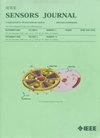GPS-Aided Stereo Inertial Navigation Localization Algorithm for Outdoor Scenarios
IF 4.3
2区 综合性期刊
Q1 ENGINEERING, ELECTRICAL & ELECTRONIC
引用次数: 0
Abstract
To address the issues of visual-inertial simultaneous localization and mapping (VISLAM) methods in outdoor environments, such as inevitable drift accumulation during trajectory exploration, loop closure errors due to similar local visual appearances from different perspectives, and degradation of structural features under varying lighting and weather conditions, a tightly coupled GPS-aided visual-inertial SLAM algorithm (TGA-EFG) is proposed in this article. The algorithm enhances the accuracy of the front-end odometry and prior poses by employing the error-state Kalman filter (ESKF) method to fuse GPS measurements, inertial measurement unit (IMU) measurements, and visual measurements for initial value calibration. And then, a sliding window mechanism is introduced the factor graph optimization to overcome the computational redundancy issues of traditional one. In such way, it avoids high-dimensional matrix inversion, thereby improves the overall processing efficiency of the system. The Experimental results launched in both public KITTI dataset and the real environment demonstrate that, comparing our algorithm with mainstream SLAM algorithms, our algorithm improves localization accuracy by 51.63% and processing speed by 12.55%.求助全文
约1分钟内获得全文
求助全文
来源期刊

IEEE Sensors Journal
工程技术-工程:电子与电气
CiteScore
7.70
自引率
14.00%
发文量
2058
审稿时长
5.2 months
期刊介绍:
The fields of interest of the IEEE Sensors Journal are the theory, design , fabrication, manufacturing and applications of devices for sensing and transducing physical, chemical and biological phenomena, with emphasis on the electronics and physics aspect of sensors and integrated sensors-actuators. IEEE Sensors Journal deals with the following:
-Sensor Phenomenology, Modelling, and Evaluation
-Sensor Materials, Processing, and Fabrication
-Chemical and Gas Sensors
-Microfluidics and Biosensors
-Optical Sensors
-Physical Sensors: Temperature, Mechanical, Magnetic, and others
-Acoustic and Ultrasonic Sensors
-Sensor Packaging
-Sensor Networks
-Sensor Applications
-Sensor Systems: Signals, Processing, and Interfaces
-Actuators and Sensor Power Systems
-Sensor Signal Processing for high precision and stability (amplification, filtering, linearization, modulation/demodulation) and under harsh conditions (EMC, radiation, humidity, temperature); energy consumption/harvesting
-Sensor Data Processing (soft computing with sensor data, e.g., pattern recognition, machine learning, evolutionary computation; sensor data fusion, processing of wave e.g., electromagnetic and acoustic; and non-wave, e.g., chemical, gravity, particle, thermal, radiative and non-radiative sensor data, detection, estimation and classification based on sensor data)
-Sensors in Industrial Practice
 求助内容:
求助内容: 应助结果提醒方式:
应助结果提醒方式:


